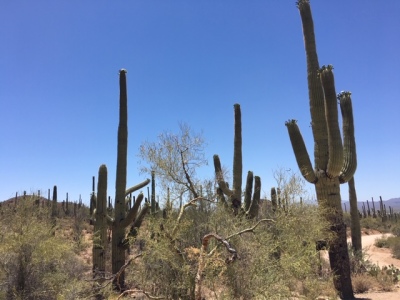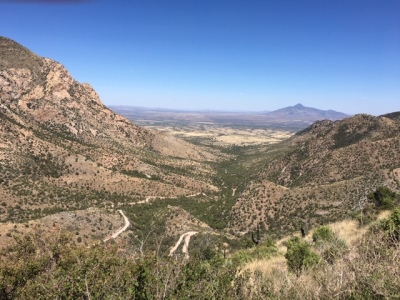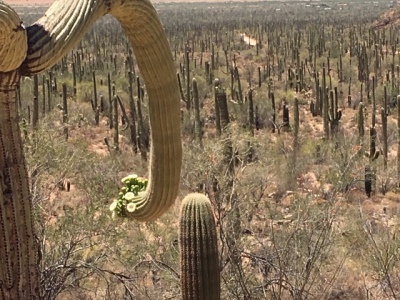
We went to Tucson, Arizona for Memorial Day weekend. It's about a 7-hour drive east of the San Diego area. I hadn't been there in 12-years, as part of a thousand mile circle through Yuma (Mostly Muffins are terrific then and still)-Tucson-Tombstone-Coronado Monument-Huachuka-Sedona-Flagstaff-Grand Canyon-various Pueblo ruins- Oatman. There are sights and activities worth the trip at all those spots. But that was with very young sons, so much was also missed, especially hiking.
This time we enjoyed the lively refurbished old buildings converted to bars and restaurants downtown and the scenic drive up 8000-feet on 23-miles of twisty-turny road to the top of Mt Lemmon with vistas all around Tucson.

Admittedly, you have to appreciate desert scenery, and the best way to enjoy it is walking step by step examining the frequently changing vegetation as soils and elevations change slightly. There are great walks and hikes in the Saguro National Park (actually two of them, east and west of Tucson). These photos don't show the diversity of vegetation and tiny flowers on short cacti, grasses, and bushes, or the flowers at the top of tall Ocotillo. They do show the largest cacti in America, the Saguro. The seedling is the size of your thumbnail, and most get eaten by birds or trampled or die in too intense sun and heat. The best condition for survival is in the shade of a mesquite bush or palo verde.
They'll grow in an elongated barrel shape, and flowers start to appear at the top after 6-years and later at the end of arms that grow after about 75-years. The flowers are the state flower of Arizona. Each bud flowers for just one day, and there are many buds. Flowering season is May-June. (You can see the buds and flowers at the top of the Saguros in the first photo above, and then at the end of an arm in the photo below.)

Severe freezing, winds, lightening, and disease result in Saguro damage and death. They seldom live more that 200-years. The tallest reach 4-stories in height.

